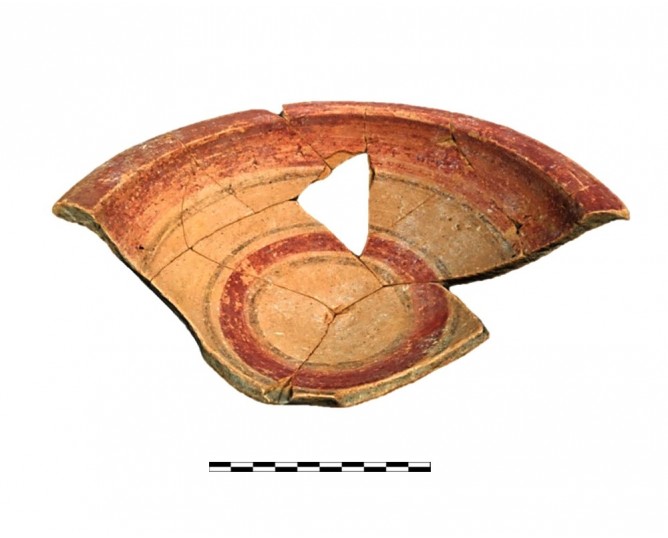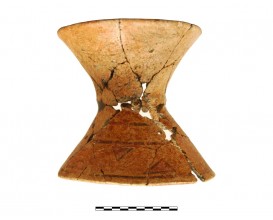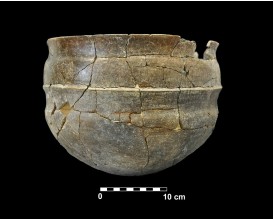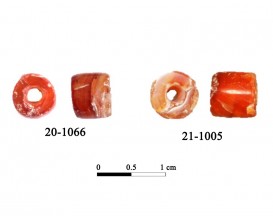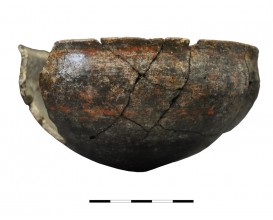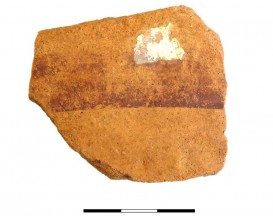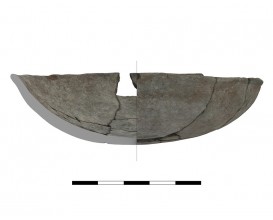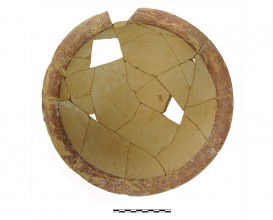Ceramic vessel 1020. Cemetery Cerro de los Vientos (Baeza, Jaén, Spain)
The physical-chemical analyses carried out by MRS revealed that the red decoration was made with hematite (Fe2O3) in high concentration (19.48% wt according the EDXRF analysis)
The black color is manufactured using a oxide of manganese identified by MRS as bixbyite/hausmannite (Mn2O3/Mn3O4). Both oxides are the result of the transformation of pyrolusite when firing temperature is set above 450ºC and below 900ºC.
Analysis by EDXRF of the black color confirms the presence of Mn: 2.8 wt of Mn versus 0.07% wt in the ceramic paste.
Dimensions
: 20 Centimeters
Materials
pottery
Temporal
: Orientalizing period
: 8th-7th ct. BC
Spatial
: Cerro de los Vientos
: Puente el Obispo, Baeza, Jaén, Spain
: WGS84
Copyrights
Creative Commons - Attribution, Non-Commercial, No Derivatives (BY-NC-ND)
References
Lechuga, M. A. y Soto, M. (2017): "La tumba de la mujer y el joven del Cerro de los Vientos (Puente del Obispo, Baeza)", en: Ruiz, A. y Molinos, M. (Eds.), Catálogo de la exposición La Dama, el Príncipe, el Héroe y la Diosa. Consejería de Cultura de la Junta de Andalucía, Sevilla, pp. 109-117.
Digital Resources
-
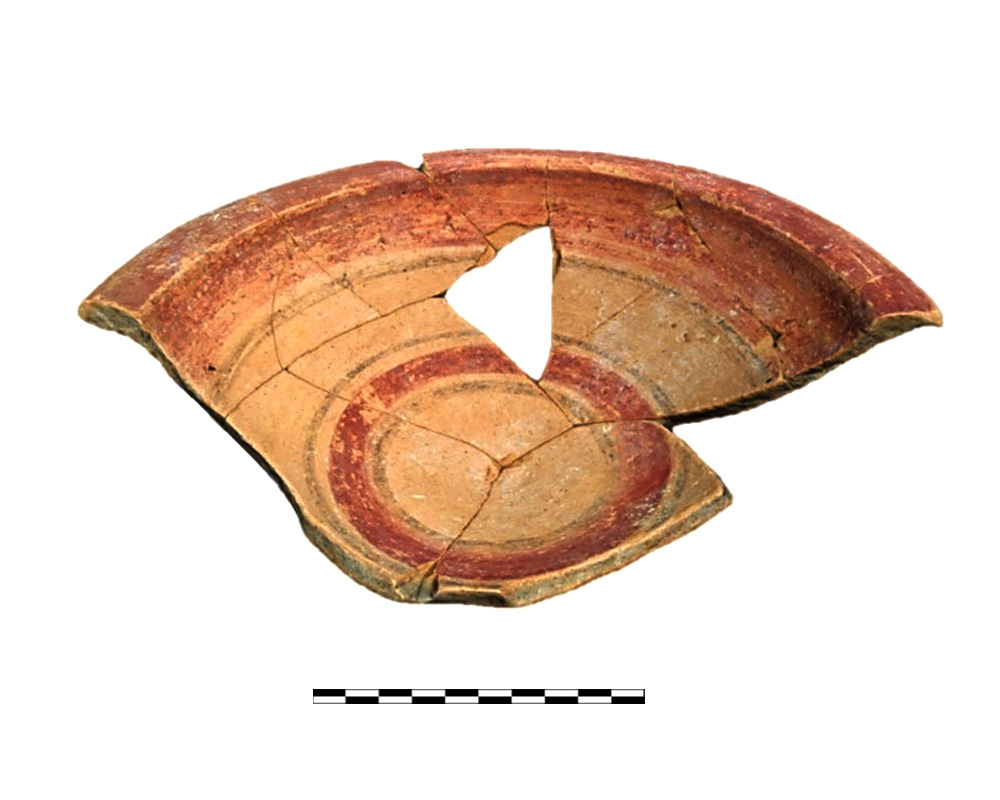 Instituto Universitario de Investigación en Arqueología Ibéra
Instituto Universitario de Investigación en Arqueología Ibéra Creative Commons - Attribution, Non-Commercial, No Derivatives (BY-NC-ND)
Arquiberlab
http://creativecommons.org/licenses/by-nc-nd/3.0/ -
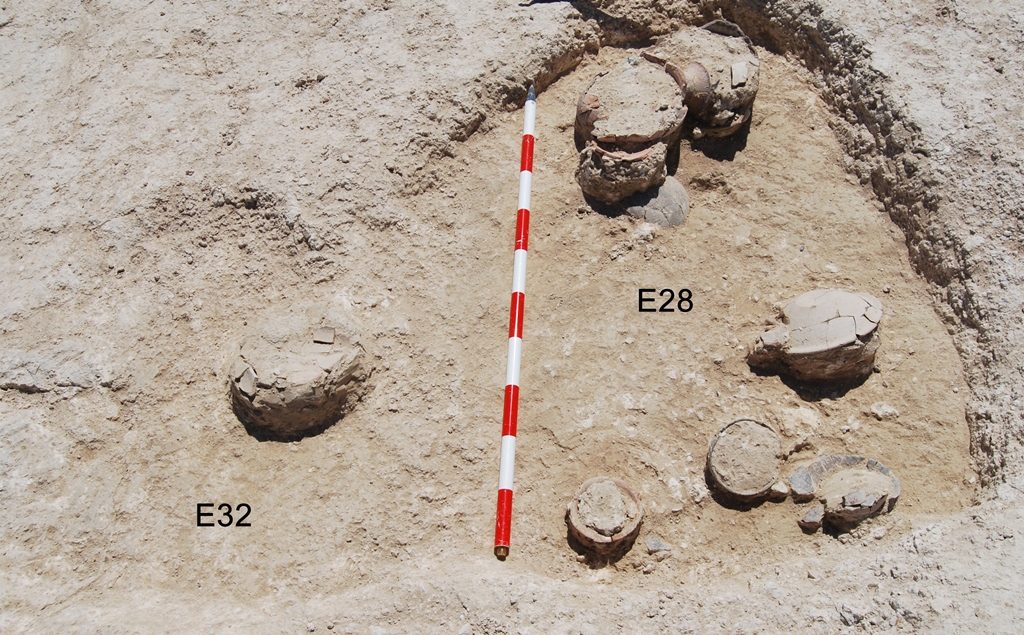 Instituto Universitario de Investigación en Arqueología Ibérica
Instituto Universitario de Investigación en Arqueología Ibérica Creative Commons - Attribution, Non-Commercial, No Derivatives (BY-NC-ND)
Arquiberlab
http://creativecommons.org/licenses/by-nc-nd/3.0/ -
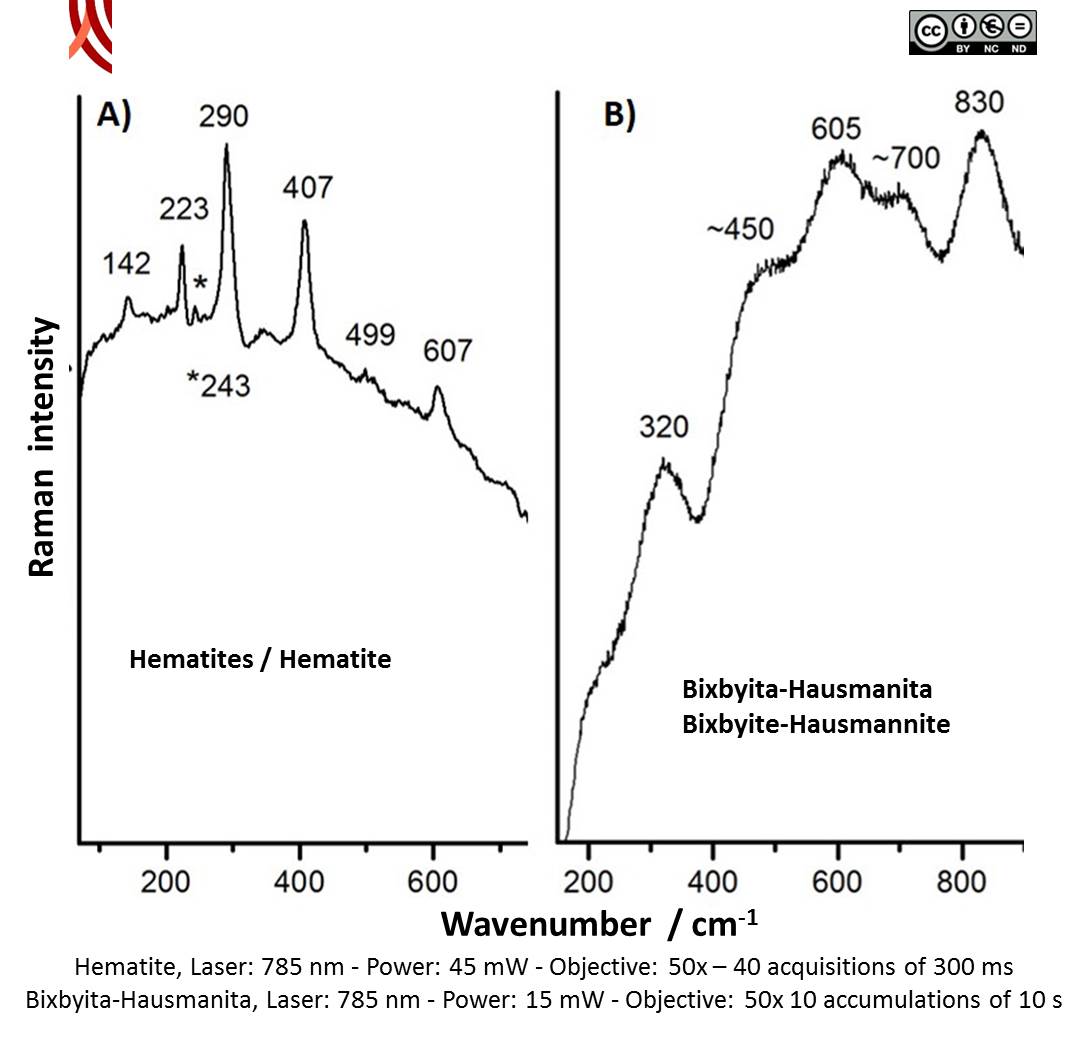 Instituto Universitario de Investigación en Arqueología Ibérica
Instituto Universitario de Investigación en Arqueología Ibérica Creative Commons - Attribution, Non-Commercial, No Derivatives (BY-NC-ND)
Arquiberlab
http://creativecommons.org/licenses/by-nc-nd/3.0/ - Instituto Universitario de Investigación en Arqueología Ibérica
pdf file
Creative Commons - Attribution, Non-Commercial, No Derivatives (BY-NC-ND)
Arquiberlab
http://creativecommons.org/licenses/by-nc-nd/3.0/
Activities
Archaeometric analysis Spectroscopic analysis Pottery. Analysis of decoration
| |
Raman Microscopy Mineral analysis of the red and black decoration Non destructive. Surface cleaning. Sample pretreatment is not required. Direct measurement. MRS Renishaw ‘in via’ Reflex Spectrometer coupled with a confocal Leica DM LM microscope (CICT, University of Jaén), equipped with an argon ion laser (514.5 nm, 25 mW), diode laser (785 nm, 300 mW), Peltier-cooled CCD detector, and calibrated to the 520.5 cm-1 line of silicon. | |
X-Ray Fluorescence Elemental analysis of the red and black decoration Non destructive. Surface cleaning. Sample pretreatment is not required. Direct measurement Energy dispersive X-ray fluorescence (EDXRF) An energy dispersive X-ray microfluorescence spectrometer (M4 Tornado, Bruker) was used for this paper (CICT, University of Jaen). This spectrometer is equipped with a microfocus X-ray tube with an Rh anode, a polycapillary lens for X-ray focussing, and a 30-mm2 energy dispersive detector (SDD). The sample chamber incorporates an XYZ motorized stage for sample positioning. A high resolution microscope is used to position the sample on the desired distance from the polycapillary. To increase the sensitivity of the low Z elements, the sample chamber can be brought under vacuum. For the analysis of the samples, a spot size of 25 μm was chosen at an operating X-ray tube voltage of 50 kV and intensity of 600 μA. The tube current was adapted for each sample in order to optimise the detection of X-rays. |

